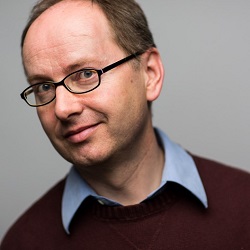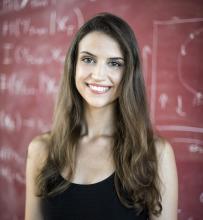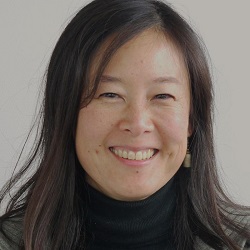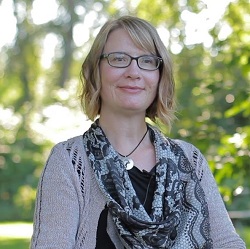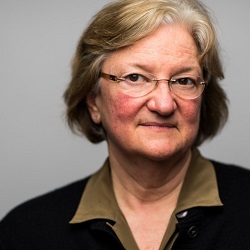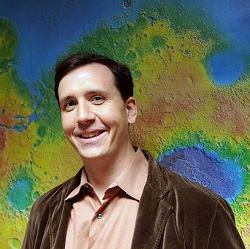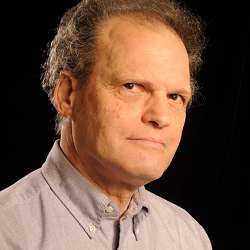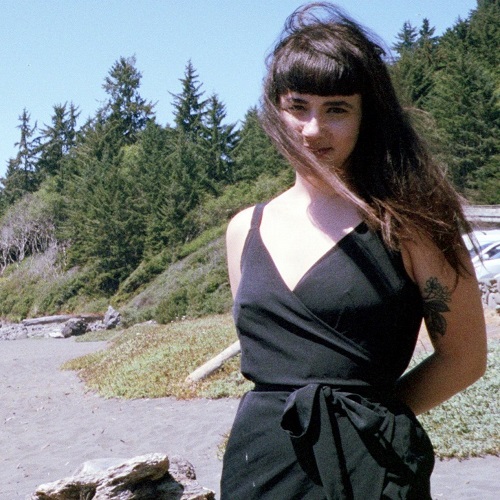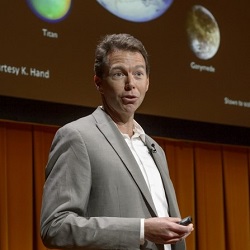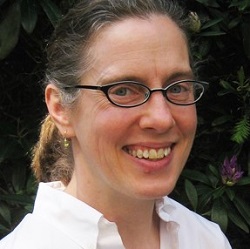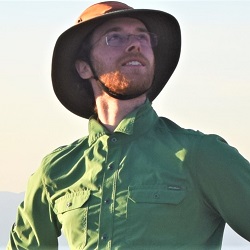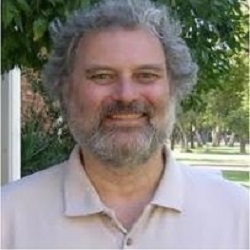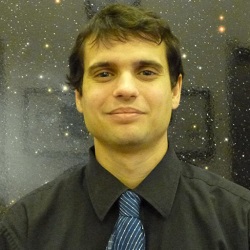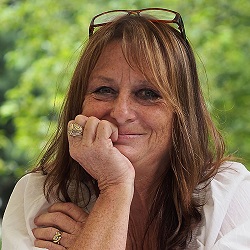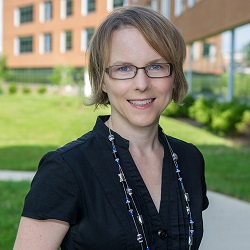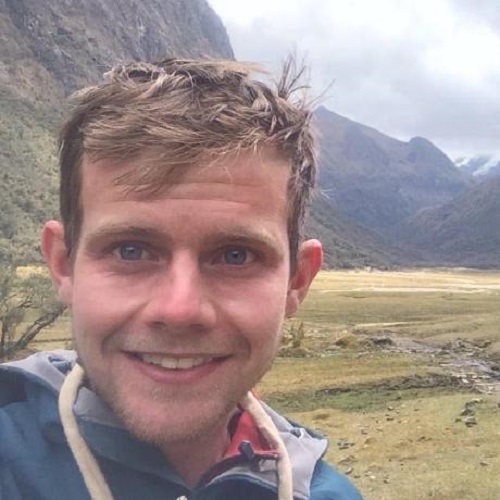This task uses interdisciplinary field and laboratory work coupled with chemical, climate and ecosystem models to explore the impact of life on its environment, and how interactions between the biosphere, planet, and host star can result in remotely detectable biosignatures.
Past VPL accomplishments in these areas include modeling of marine biogenic gases in the Archean (Kharecha et al. 2005); simulation of the light environment for photosynthesis on planets orbiting different stars, and uncovering how photosynthetic pigments and atmospheric composition may have coevolved (Kiang et al., 2007a, 2007b, 2008); photoacoustic measurements of photon energy storage efficiency in a chlorophyll d-utilizing cyanobacterium (Mielke et al., 2011); genetic and biochemical studies of microbial mats at the Cuatro Cienegas field site as analogs for life on the Early Earth (Breitbart et al 2009, Desnues et al, 2008, Souza et al, 2008); coupling of dynamic land and ocean ecosystem models in GCMs in preparation for 3D extrasolar planet modeling; and pioneering work on alternative biosignatures for anoxic atmospheres (Domagal-Goldman et al., 2011).
In current and future projects, we plan to pay special attention to metabolism-environment combinations that have distinctive traits with regard to biogenic gases and/or surface spectral features, with accompanying process models. These projects span analogs for the Earth through time and extrasolar environments. In a broader context, our work will provide direct observational constraints on the possible path of biosphere-planet co-evolution as it relates to photosynthetic life, both on Earth and beyond.
Recent scientific progress and highlights include:
The Ent Dynamic Global Terrestrial Ecosystem Model
VPL researchers recently implemented a full carbon cycle in the Goddard Institute for Space Studies general circulation model (GISS GCM), including an ocean biogeochemistry model. We are continuing evaluation and testing of the coupled carbon dynamics to achieve a balanced carbon cycle with seasonal dynamics and prescribed land vegetation cover. Evaluation includes comparing equilibrium behavior of carbon stocks and identifying climate biases with observed meteorology for the 20th century versus coupled to the GISS GCM. To do this with realistic land vegetation cover, we have been developing a global vegetation structure dataset to utilize the latest MODIS products (land cover, leaf area index, albedo), as well as LiDAR from the Geoscience Laser Altimeter System aboard the Ice, Cloud, and Land Elevation Satellite (ICESat/GLAS) (vegetation height) to serve as both boundary conditions or as a performance evaluation dataset. This improved dataset performs corrections for areas of steep topography and uses MODIS and climate data to classify pixels not observed by ICESat/GLAS. Global tests with this dataset will help constrain the carbon budget of the Earth and processes in the Ent model, setting the stage for experiments for exoplanet biosphere modeling.
The Long Wavelength Limit For Oxygenic Photosynthesis
For planets orbiting M dwarfs, or for haze-covered planets like the early Earth, sunlight reaching the surface of the planet will be concentrated at longer wavelengths. To better understand the long-wavelength limit for photosynthesis, NAI postdoctoral fellow Steven Mielke is working on measurements of the efficiency of photon energy storage by wavelength in whole intact cells of the cyanobacterium Acaryochloris marina. A. marina is the only known organism to have chlorophyll d (Chl d) which uses photons at wavelengths in the far-red (713-715 nm) and near-infrared (740 m), whereas all other oxygenic photosynthetic organisms use chlorophyll a (Chl a) with absorbance peaks at 680 nm and 700 nm. Using pulsed, time-resolved photoacoustics (PTRPA or PA), we have obtained detailed measurements indicating that A. marina shows efficiencies higher than or comparable to those in Chl a-utilizing organisms. These results imply that oxygenic photosynthesis can operate quite effectively at far-red/near-infrared wavelengths without losses to back reactions (Mielke et al., 2011).


Click to See Researchers Working on This Task
Bio: Over a 26-year career in the biotechnology industry, I built and led R&D programs that identified the enzymes required for the release from cells of two central mediators of inflammation, interleukin-1β and tumor necrosis factor-α. In addition to authoring key papers on the biochemistry, structure and cell biology of these enzymes, I co-directed medicinal chemistry efforts to develop inhibitors for therapeutic use. I also led a program to develop a naturally occurring protein inhibitor of metalloproteases for use in treating osteoarthritis and heart failure. In 2010, I took a sabbatical to learn about prebiotic membranes in the laboratory of Dr. David Deamer at the University of California-Santa Cruz, and in 2011 I left industry to pursue my origin-of-life interest as an affiliate professor at the University of Washington. With Dr. Sarah Keller in the Department of Chemistry, I have published a paper showing that RNA bases and ribose bind to and stabilize a model prebiotic membrane, and a review of evidence for the concept that a self-assembled aggregate composed of a fatty acid membrane and the building blocks of biological polymers provides a first step in the emergence of cells. We were awarded a grant from NASA in 2017 to establish further evidence for this concept.
Email: dcatling@u.washington.edu
VPL Focus: Task B, Task D
Bio:
After a doctorate in the Dept. of Atmospheric, Oceanic and Planetary Physics at the University of Oxford, England, I worked as a planetary scientist near San Francisco at NASA’s Ames Research Center from 1995-2001. In 2001, I joined the faculty at the University of Washington in Seattle. I also had a stint as European Union Marie Curie Chair in Earth and Planetary System Science at the University of Bristol, England, from 2005-2008, while also an affiliate professor at the University of Washington.
Currently, I’m a Professor jointly appointed to the Dept. of Earth and Space Sciences and cross-campus Astrobiology Program at the University of Washington. My research interests revolve around understanding the co-evolution of planetary atmospheres, planetary surfaces, and life. This includes collecting and interpreting data from other planets and the Earth. A key goal is to understand the habitability of planets in general. I have also been involved in NASA’s exploration of Mars and was part of a 35-person team of scientists responsible for NASA’s Phoenix Mission, a probe that landed and operated successfully in the northern polar region of Mars in 2008. I am author of the book, Astrobiology: A Very Short Introduction— a readable and up-to-date summary of the subject. I also have co-written a technical book aimed at researchers and PhD students entitled Atmospheric Evolution on Inhabited and Lifeless Worlds.
For more info on research, check out my publications.
Email: jadecheclair@uchicago.edu
VPL Focus: Task D
Bio:
I am developing statistical habitability tests we could use with future direct imaging instruments (LUVOIR and/or HabEx). In particular, I am interested in ways to test the concept of the habitable zone and its boundaries using large samples of exoplanets. Currently, I am working on how we could test for a functioning silicate-weathering feedback on habitable exoplanets. My goal is to determine the feasibility of those statistical tests, by exploring how many exoplanets we would need to observe in order to conduct them given observational constraints.
A large part of my work also focused on studying the climate of potentially habitable tidally locked planets, which may be common around M-dwarf stars. Particularily, I looked at the Snowball bifurcation on tidally-locked planets.
Email: nancy.y.kiang@nasa.gov
VPL Focus: Task D (Lead), Task E
Bio:
Dr. Kiang conducts research on the interaction between the biosphere and the atmosphere, focusing on life on land. Through photosynthesis and the evapotranspiration of water from plant leaves, seasonal cycles of growth and decay, and occasional big events like fires, the biosphere on Earth exchanges heat, water vapor, carbon dioxide, methane, nitrogen in different forms, and many other compounds with the atmosphere. These exchanges result in the biosphere actively controlling the climate and spectral properties of the Earth.
Dr. Kiang also relates this work to research in astrobiology, particularly with regard to how photosynthetic activity produces signs of life at the global scale (e.g., biogenic gases like oxygen and photosynthetic pigments like chlorophyll) and how these may exhibit adaptations to alternative environments on extrasolar planets, resulting in other “biosignatures” that might be detected by space telescopes.
Her work includes computer simulation modeling of vegetation dynamics coupled to atmospheric general circiulation models (GCMs), occasional fieldwork, and theoretical studies on the thermodynamic efficiency of photon energy use in photosynthesis. Dr. Kiang splits her time between New York and Los Angeles.
Selected Publications:
Mielke, S.P., N.Y. Kiang, R.E. Blankenship, M.R. Gunner, and D. Mauzerall, 2011: Efficiency of photosynthesis in a Chl d-utilizing cyanobacterium is comparable to or higher than that in Chl a-utilizing oxygenic species. Biochim. Biophys. Acta Bioenerg., 1807, 1231-1236, doi:10.1016/j.bbabio.2011.06.007.
Kiang, N.Y., 2008: The color of plants on other worlds. Sci. Amer., 298, no. 4, 48-55. (Cover article)
Kiang, N.Y., A. Segura, G. Tinetti, Govindjee, R.E. Blankenship, M. Cohen, J. Siefert, D. Crisp, and V.S. Meadows, 2007: Spectral signatures of photosynthesis II: Coevolution with other stars and the atmosphere on extrasolar worlds. Astrobiology, 7, 252-274, doi:10.1089/ast.2006.0108.
Kiang, N.Y., J. Siefert, Govindjee, R.E. Blankenship, and V.S. Meadows, 2007: Spectral signatures of photosynthesis I: Review of Earth organisms. Astrobiology, 7, 222-251, doi:10.1089/ast.2006.0105.
Email: Mary.N.Parenteau@nasa.gov
VPL Focus: Task D (Lead)
Bio:
I study the physiology of microbes in extreme environments, and the production and preservation of their biosignatures in mineral deposits analogous to ones found on Mars.
Email: jdeming@uw.edu
VPL Focus: Task D
Bio:
Jody W. Deming earned her Ph.D. in (marine) Microbiology from the University of Maryland (1981), after a B.A. in Biological Sciences cum laude from Smith College (1974). She developed microbial life detection assays for NASA between degree programs (1974–1977). She then received NSF and NOAA postdoctoral fellowships for deep-sea research (1981–1983) at the Scripps Institution of Oceanography and the Johns Hopkins University. She continued research at Johns Hopkins, including Alvin dives at deep-sea hydrothermal vents, until moving to the University of Washington in 1988, where she is Professor in the School of Oceanography. At UW, she has directed the Marine Bioremediation Program (1992–1999), launched the Center for Environmental Genomics, helped establish the nation’s first graduate training program in Astrobiology (1998–present), and directed the Future of Ice Initiative (2014–2015). She and her students currently explore microbial life in the Arctic Ocean and its sea-ice cover. She chaired the International Arctic Polynya Program (2000–2012) and served on the US Polar Research Board during the International Polar Year (2007–2009) and as chief scientist on international, overwintering icebreaking expeditions (2003–2004, 2008–2009). She counts over 50 seagoing or ice-related expeditions during her career. Among her awards are the US Coast Guard Arctic Service Medal (1993), Honorary Doctorate in Science and Engineering, Université Laval, Quebec City (2006), Walters Endowed Professorship (2009–2016), Hasselblad Guest Professor, University of Göteburg, Sweden (2015), and Karl M. Banse Endowed Professorship (2016– present). She is Editor-in-Chief of the Ocean Science domain of Elementa: Science of the Anthropocene, a member of the American Academy of Microbiology (elected 1999) and of the US National Academy of Sciences (elected 2003). She loves to swim, in salty water.
Email: shawn.goldman@nasa.gov
VPL Focus: Task B (Lead), Task D, Task E
Bio:
Shawn Domagal-Goldman in a Research Space Scientist in the Planetary Environments Laboratory at NASA’s Goddard Space Flight Center in Greenbelt, MD. He is an astrobiologist that focuses on comparative planetology. As a member of multiple interdisciplinary teams, he simulates the atmospheres of other worlds, including those of ancient Earth, modern Mars, ancient Mars, and exoplanets. He utilizes the outputs from those simulations to interpret data from some of Earth’s most ancient rocks, from the Mars Curiosity rover, and to simulate the capabilities of future space-based telescopes designed to look for life on exoplanets. Shawn is a collaborator by nature, and a member of many research and mission teams, including the Curiosity science team, the HabEx Science and Technology Definition Team, the Large UV-Optical-Infrared Surveyor (LUVOIR) Study Office, is on multiple research teams in the Nexus for Exoplanet Systems Science (NExSS).
Email: samroseg@uw.edu
VPL Focus: Task E
Bio:
I am a PhD student in Astronomy and Astrobiology at the University of Washington. As a member of the Virtual Planetary Laboratory, I am exploring how we will interpret spectral observations of terrestrial exoplanets with future instruments. In preparation for upcoming transmission or direct imaging missions, I am particularly interested in developing robust frameworks for interpreting the detection of biosignature gases.
Email: olehmer@uw.edu
VPL Focus: Task B, Task D
Bio:
My research focus is on modeling the formation, evolution, and detection of habitable planets in an effort to find and characterize the next Earth-like planet.
Email: eschwiet@ucr.edu
VPL Focus: Task A, Task B, Task D
Bio:
I’m a member of the UCR Alternative Earths Team at the University of California, Riverside. My supervisor is Dr. Timothy Lyons. I’m also a member of the Virtual Planetary Laboratory. My research interests and activities include studying Earth as an exoplanet (throughout geologic time), determining planetary properties from disk-integrated spectra, climate, photochemical, and radiative transfer modeling of terrestrial planet atmospheres, and generating synthetic spectra of model exoplanets. I’m particularly interested in work that can inform our ability to characterize Earth-sized planets that reside in the habitable zones of their host stars, especially in search of remotely detectable biosignatures.
Email: siefert@stat.rice.edu
VPL Focus: Task D
Bio:
Janet Louise Siefert received her PhD from the University of Houston, and currently is a Senior Faculty Fellow in the Department of Statistics at Rice University.
She is an origin of life researcher who received her training from Dr. George E. Fox, co-discoverer of the third domain of life. Her work deals with understanding life’s origins through microbial ecology, working primarily in Cuatro Cienegas, Mexico, a desert protected by the Mexican government and known to exhibit endemism equal to the Galapagos.
She is the first woman to serve as chairman of the Gordon Research Conference on the Origin of Life and the first president of ISSOL: the International Astrobiology Society. Her work has been featured on Discovery, National Geographic, and the History Channel.
Email: wogan@uw.edu
VPL Focus: Task B, Task D
Bio:
Nick is a graduate of the University of Oregon where he majored in Physics
His past research has focused on Electromagnetic geophysics, Seismology, and Geodynamics and his future research interests include thermodynamics and disequilibrium biosignatures
In his free time Nick enjoys climbing mountains and then skiing down them! And you might find this interesting, but Nick has never tasted Pepsi or Coke.

